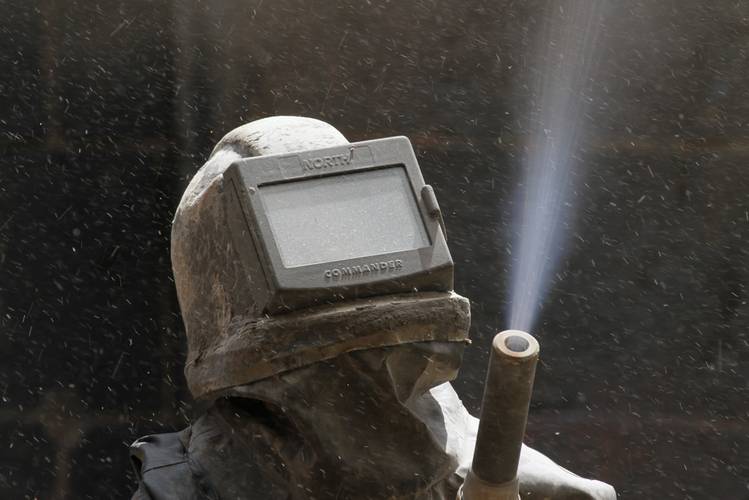OP/ED: Maritime Industry Faces Compliance Standard from OSHA on Respirable Crystalline Silica
Companies with workers repairing and refurbishing ship components utilizing sand blasting have become the subject of a new U.S. Department of Labor Occupational Safety and Health Administration (OSHA) standard.
All employers and employees in the maritime industry need to be aware of the new requirements as OSHA continues efforts to protect workers from the hazards of exposure to breathable silica dust. The new application of the "Respirable Crystalline Silica" standards requires all covered maritime and general industry employers to assess existing exposures.
Maritime and general industry employers now covered by respirable crystalline silica standards should immediately conduct a review of their written safety program(s). These programs, and accompanying employee training, should be updated as necessary to meet the requirements of the silica standard.
Employers must determine if any employee exposed to silica dust might be at or above a defined “action level,” which is any exposure to 25 micrograms of silica per cubic meter of air averaged over an 8-hour day. If silica dust is present in the workplace, the employer must take steps to protect workers from exposure in excess of the permissible exposure limit (PEL) of 50 micrograms of silica per cubic meter of air averaged over an 8-hour day.
Compliance to this standard was originally limited to the construction industry, which required employers to meet the requirements of the standard as of September 23, 2017. However, as of June 23 of this year, a respirable crystalline silica standard has been adopted to cover all employers in the maritime and general industries.
In addition to federal OSHA, there are currently 28 OSHA-approved state plans. States are allowed to implement their own, statewide occupational safety and health programs pursuant to written agreements with the U.S. Department of Labor. State Plans are required to have standards and enforcement programs that are as least as effective as OSHA's, although they may have different or more stringent requirements.
Crystalline silica is a common mineral found in such materials as sand, stone, concrete, brick, and mortar. Certain common industrial or construction activities, such as using saws, drills, or grinders, can release silica dust into the air. In the maritime industry, the principal source of crystalline silica is the use of sand for abrasive blasting. This is especially common for port repair workers.
Employers in this part of the maritime industry and others where it might be applicable are required to limit access to areas where silica is at or above the PEL. Exposure to respirable crystalline silica increases the risk for a person to develop lung cancer, chronic obstructive pulmonary disease and silicosis — a currently incurable lung disease.
Employers must actively work to limit workplace silica dust to below the PEL. This can include reducing airborne dust or providing respirators to affected workers. Methods used to reduce or eliminate breathable silica dust exposure must be detailed in a written control plan, which should include specific tasks and those responsible for implementing the changes to help reduce exposure to the employees.
Of equal importance, all workers must receive training on operations that result in silica exposure as well as ways to limit such exposure. In addition to the written exposure control plan, employers must keep records of silica measurements, object data and required employee medical exams, which must be offered to every employee who will be exposed above the PEL for 30 or more days per year. This exam must be provided to each exposed employee every three years and must include chest x-rays and lung function tests.
Compliance with the silica standard does not exempt an employer from the duty to comply with all other applicable OSHA standards. For example, OSHA specifically requires maritime employers engaged in abrasive blasting operations (using crystalline silica-containing blasting agents) to comply with several additional standards, including ventilation and use of mechanical paint removers.
Employers in the maritime and general industries may, under certain circumstances, opt to utilize the silica standard adopted for the construction industry instead of the general industry and maritime standard. However, that deviation should be properly vetted before assuming compliance will be met.
Tom Davis is a partner in Poyner Spruill LLP’s litigation section and has more than 25 years of experience in the litigation and arbitration of complex cases. He regularly represents property owners, design professionals and construction contractors on construction related issues, including contract negotiation, claims analysis and presentation, labor and OSHA disputes, professional licensing disputes, and land condemnation.
This article first appeared in the November print edition of MarineNews magazine.















